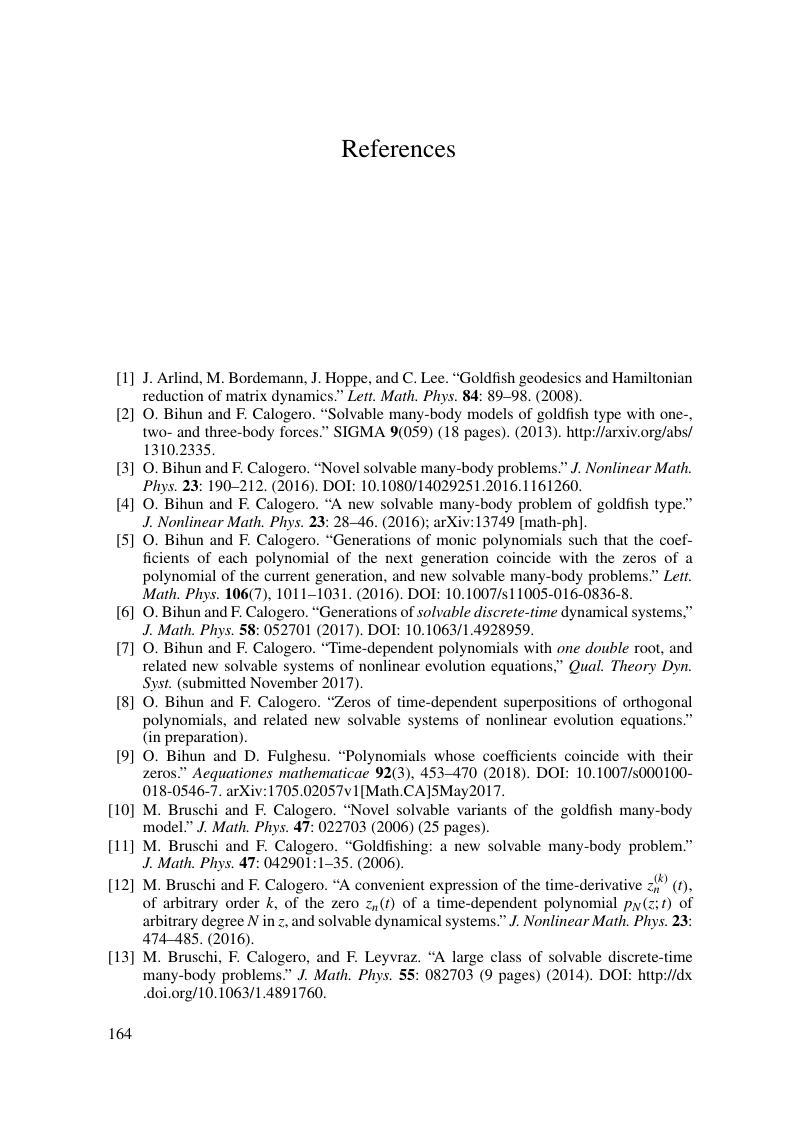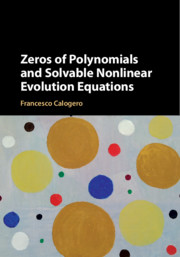Book contents
- Frontmatter
- Contents
- Preface
- 1 Introduction
- 2 Parameter-Dependent Monic Polynomials: Definitions, Key Formulas and Other Preliminaries
- 3 A Differential Algorithm to Compute All the Zeros of a Generic Polynomial
- 4 Solvable and Integrable Nonlinear Dynamical Systems: Mainly Newtonian N-Body Problems in the Plane
- 5 Solvable Systems of Nonlinear Partial Differential Equations (PDEs)
- 6 Generations of Monic Polynomials
- 7 Discrete Time
- 8 Outlook
- Appendix Complex Numbers and Real 2-Vectors
- References
- References
References
Published online by Cambridge University Press: 14 September 2018
- Frontmatter
- Contents
- Preface
- 1 Introduction
- 2 Parameter-Dependent Monic Polynomials: Definitions, Key Formulas and Other Preliminaries
- 3 A Differential Algorithm to Compute All the Zeros of a Generic Polynomial
- 4 Solvable and Integrable Nonlinear Dynamical Systems: Mainly Newtonian N-Body Problems in the Plane
- 5 Solvable Systems of Nonlinear Partial Differential Equations (PDEs)
- 6 Generations of Monic Polynomials
- 7 Discrete Time
- 8 Outlook
- Appendix Complex Numbers and Real 2-Vectors
- References
- References
Summary

- Type
- Chapter
- Information
- Zeros of Polynomials and Solvable Nonlinear Evolution Equations , pp. 164 - 168Publisher: Cambridge University PressPrint publication year: 2018

